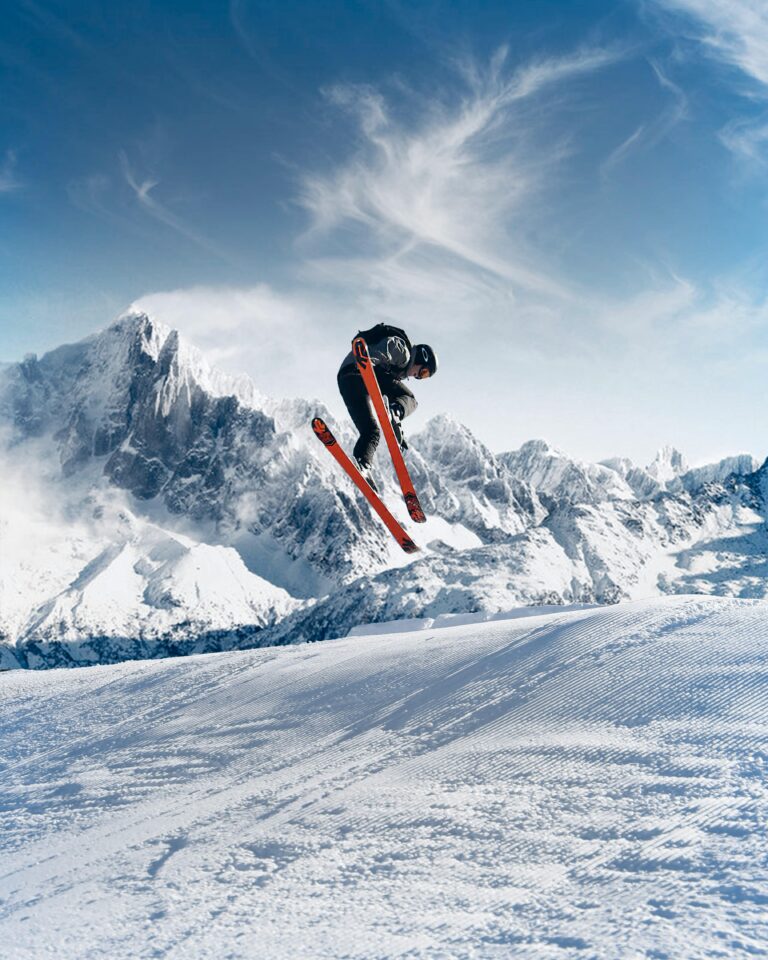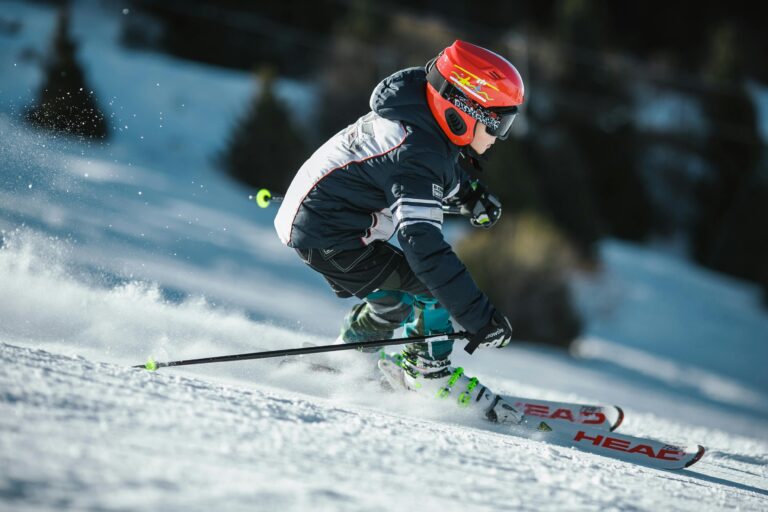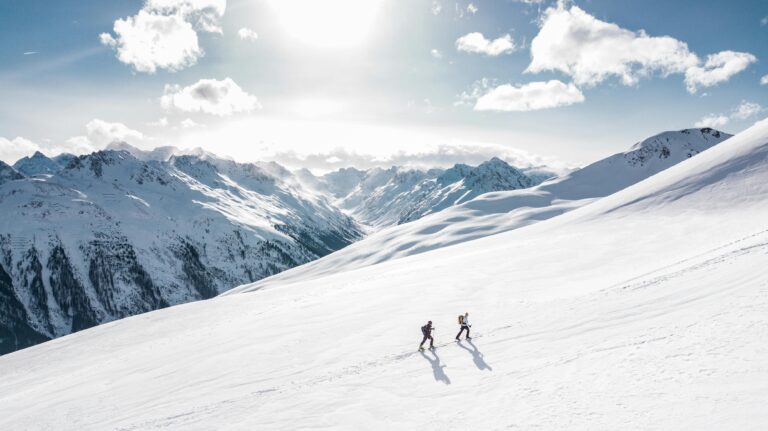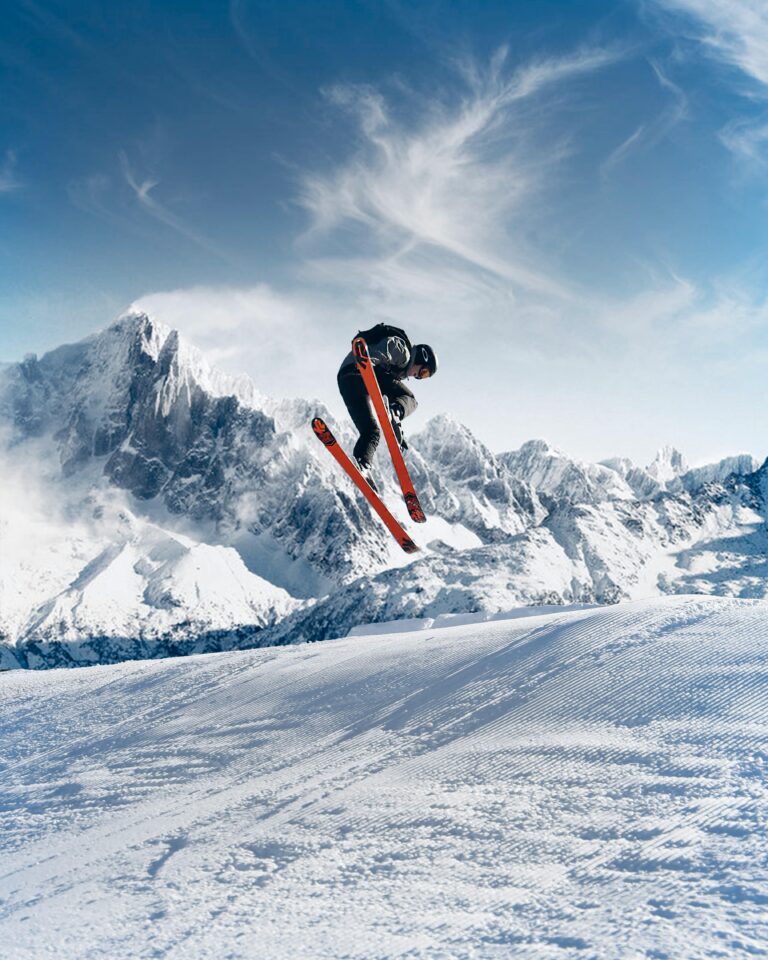Absolutely, you can ski without poles! In fact, it’s a surprisingly freeing way to ski that makes you focus on balance and movement driven by your own body instead of your gear. Lots of skiers who give it a try end up feeling more connected to the snow and improving their technique—but fair warning: it takes some getting used to, especially if you’re new on the slopes.
Understanding Skiing Without Poles
Skiing without poles is a technique where skiers navigate slopes without the aid of ski poles, emphasizing balance and control through body movement. This approach is significant for both beginners and seasoned skiers, as it enhances their connection with the terrain and promotes a natural skiing style.
Trying pole-free skiing adds a fresh spin to how you experience the mountain. Imagine gliding down quietly, hands free, really feeling how your body and the snow interact. Without poles, you depend more on your own balance, weight shifts, and core strength. It might feel tricky at first, but once you get the hang of it, skiing without poles can open up new ways to tackle different snow conditions and terrain.
Why Do Skiers Choose to Go Without Poles?
Many skiers opt to ski without poles to experience a greater sense of freedom and fluidity in their movements. Discussions around this topic often highlight personal motivations, such as enjoying a more natural skiing experience and improving overall technique.
People often say skiing without poles feels like dancing on snow—that’s exactly how Lucas Jennings, a longtime skier I know, describes it. He loves the freedom to move more gracefully without poles holding him back. I’ve seen threads where seasoned skiers agree: ditching poles can make skiing feel less mechanical and more spontaneous.
For some, going pole-free is about getting back to basics. Without poles, you rely on your body entirely, which pushes you to balance better and become more agile. One skier summed it up perfectly: “Losing the poles forced me to trust my own balance—and that challenge paid off big time.”
What Are the Benefits of Skiing Without Poles?
The benefits of skiing without poles include enhanced balance and coordination, a deeper understanding of skiing techniques, and increased core strength. These aspects lead to improved performance on the slopes, as skiers become more attuned to their body mechanics.
Here’s why ditching poles might actually boost your skiing:
- Enhanced Balance: No poles means you have to keep your core engaged constantly, sharpening your stability.
- Improved Technique Understanding: Without poles to lean on, you naturally tune into how your weight shifts, how you turn, and how you stop.
- Physical Fitness: Skiing without poles works muscles you might not usually focus on—hello, stronger core and better overall fitness.
There’s even research backing this up. The National Ski Areas Association found that skiers who challenge themselves this way often become better at classic techniques. As ski coach Anna Vail puts it, “Losing poles makes you pay attention to your body, lifting your entire skiing game.”
What Are the Drawbacks of Skiing Without Poles?
While skiing without poles has its advantages, it poses challenges for new and intermediate skiers, such as an increased risk of falls, loss of control in certain situations, and difficulties in generating thrust.
Let’s be honest: starting out without poles can be tough. Many beginners rely on poles for balance, so taking them away means you might find yourself wobbling more or even falling.
Some common challenges:
- Risk of Falls: If you’re not used to balancing without poles, steeper or trickier slopes can catch you off guard.
- Lack of Thrust: Poles give you a little extra push on flat parts — without them, you might find it harder to build speed.
- Pacing Difficulties: Switching to ski without poles can change how you time your turns or manage your speed, which takes some adjustment.
So, while skiing pole-free feels amazing once you get it, keep these hurdles in mind and don’t rush the process.
How to Transition from Using Poles to Skiing Without Them
To smoothly transition from using ski poles to skiing without them, practice balance exercises focused on refining your stance, and gradually decrease your reliance on poles while skiing.
If you want to try skiing without poles safely, here’s what worked for me and others:
- Balance Exercises: Try standing on one leg or using a balance board to build stability.
- Easy Slopes First: Pick gentle hills so you can focus on your balance without worrying about speed or rocks.
- Cut Back Slowly: Start skiing with both poles, then go one pole for a few runs, then ditch them completely.
- Stay Mindful: Pay attention to how your body feels and adjust your stance as you go.
These steps help lower the risk of frustration (and faceplants!). If you want a solid plan, look up resources from the US Ski & Snowboard Foundation—they’ve got great advice.
Key Techniques for Skiing Without Poles
Successful pole-free skiing requires mastering key techniques, including specific methods for turning, braking, and maintaining speed while focusing on body alignment and stance adjustment.
Some moves that really help:
- Turning: Shift your weight to your outside ski and lean with your hips and legs. Engage your core to keep steady.
- Braking: Use a wedge (snowplow) to slow down by pressing your skis together and digging in with the edges.
- Maintaining Speed: Stay dynamic—bend your knees and lean slightly forward so you can react to bumps and turns.
If you learn better by watching, I found this video really helpful:
Common Misconceptions About Skiing Without Poles
Several misconceptions surround the concept of skiing without poles, particularly regarding safety and perceived difficulty, which often deter skiers from trying this technique.
A big myth is that skiing without poles is unsafe—you’ll lose balance and take a tumble. But actually, many skiers say going pole-free improved their control and balance overall.
Sarah Timmons shared how nervous she was at first: “I thought skiing without poles was reckless, but it totally changed how I understand balance. It was eye-opening.” So while it might seem scary, give yourself a chance. You might surprise yourself.
Are Ski Poles Necessary for Beginners?
While poles are beneficial for beginners, offering balance and control, ultimately, they aren’t strictly necessary as novice skiers can learn foundational techniques without them.
If you’re just starting out, poles usually help you learn the rhythm and timing of turns and give you a little extra stability. But if you’re feeling confident, you can still build solid basics without them—especially on easy slopes.
Some key points:
- Why Poles Help: Great for stability and staying balanced on tricky terrain.
- Why Skip Them: You learn to focus on balance and posture first.
In the end, it boils down to what feels right for you and how you learn best.
Which Skiing Styles Are Best Suited for Going Without Poles?
Certain skiing styles are particularly well-suited for pole-free techniques, including ski touring and freestyle skiing, where agility and body awareness are key.
Pole-free skiing fits naturally with styles like:
- Ski Touring: You move a lot and adjust to the terrain, so having free hands and focusing on body control really pays off.
- Freestyle: Tricks and jumps demand balance and creativity more than pole support.
Folks on sites like Quora often mention that freestyle skiing especially feels way smoother without poles—it just fits the flow better.
Tips for Choosing the Right Gear if You Decide to Use Poles
If you choose to use poles, selecting the right gear is essential for performance and comfort, with considerations on pole length, weight, and type based on your skiing style.
If you stick with poles, here’s how to pick the right ones:
- Pole Length: Hold the pole upside down while standing—your grip should reach your armpit.
- Weight: Go lightweight (carbon fiber is awesome) so your arms don’t get tired.
- Style: Match poles to your skiing—telemark poles aren’t the same as racing poles.
Getting the right poles makes a big difference in comfort and performance.
FAQs About Skiing Without Poles
Can anyone ski without poles?
Yes, anyone can ski without poles, but it’s advisable for skiers to have a good grasp of balance and technique before attempting it. Beginners may find it easier to learn using poles for support as they develop control and confidence on the slopes.
Do professional skiers ski without poles?
Many professional skiers practice skiing without poles during training to enhance their balance and control. This helps improve their overall technique and can be beneficial in certain skiing styles and competitions.
What slopes are suitable for skiing without poles?
Gentle, flowing slopes are ideal for skiing without poles, as they require less control and allow skiers to practice balance. Beginners should start on easier hills before progressing to more challenging terrain once comfortable.
How can I improve my balance for skiing without poles?
Improving balance can be achieved through exercises such as yoga, balance boards, and strength training focused on the core. However, specific skiing practice on gentle slopes without poles also aids in building the necessary stability.
References
- Skiing 101 – National Ski Areas Association
- Do You Really Need Ski Poles? – Outside Online
- Ski Techniques – The Ski School
- US Ski & Snowboard
- Research paper on balance in skiing

Skiing without poles might just shake up how you hit the slopes. It’s challenging, sure, but for many of us, it brings a fresh sense of freedom and control worth chasing. Give it a go—you might find a new favorite way to glide.




